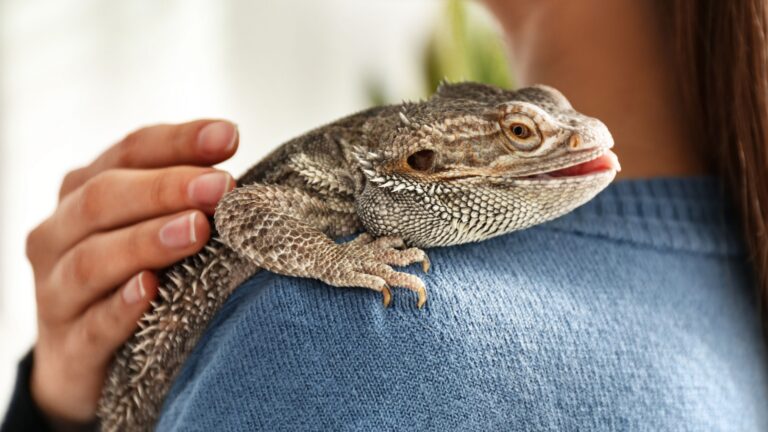10 Small Things That Keep Your Dog Happy And Secure (And 5 Habits That Can Stress Them Out)

Our furry friends rely on us completely for their well-being, but sometimes the little things make the biggest difference in their lives.
Dogs thrive on routine, love, and security – yet many common human behaviors can actually cause them stress without us realizing it.
Understanding what makes your dog feel safe versus what triggers anxiety isn’t just kind – it’s essential for building a strong bond with your four-legged family member.
1. Regular Feeding Schedule

Dogs are creatures of habit who thrive when meals arrive like clockwork. A consistent feeding routine signals safety to your pup’s primitive brain, reducing anxiety about when the next meal will appear.
Watch how your dog’s entire demeanor changes as mealtime approaches – the excitement isn’t just about food, it’s about the reliability of your care. This predictability builds trust.
Even on hectic days, try to maintain feeding times within 30 minutes of their usual schedule. Your dog’s digestive system adapts to regular timing, improving overall gut health and preventing hunger-related behavior problems.
2. Dedicated Daily Playtime

A game of fetch or tug-of-war does more than burn energy – it creates joy! Your undivided attention during play sessions makes your dog feel valued and important in your life.
Even just 15 minutes of focused play strengthens your bond while providing crucial mental stimulation. Dogs who receive regular playtime show fewer destructive behaviors like chewing furniture or excessive barking.
Mix up the games to keep things interesting – hide and seek one day, puzzle toys the next. Your dog’s wagging tail and bright eyes during these moments aren’t just signs of fun – they’re expressions of deep contentment and security.
3. Cozy Resting Spot

Every dog deserves their own special retreat – a place that smells like them and feels like safety. Whether it’s a plush bed, crate with soft blankets, or a corner of the couch, this dedicated space becomes their sanctuary.
Dogs spend 12-14 hours daily resting, making their sleeping spot crucial for physical and emotional well-being. The perfect spot should be draft-free, away from household traffic, and consistently available.
Adding an item with your scent (like an old t-shirt) can provide extra comfort during your absence. When your dog voluntarily retreats to their special place, respect this as their way of saying they need some quiet time.
4. Gentle Physical Contact
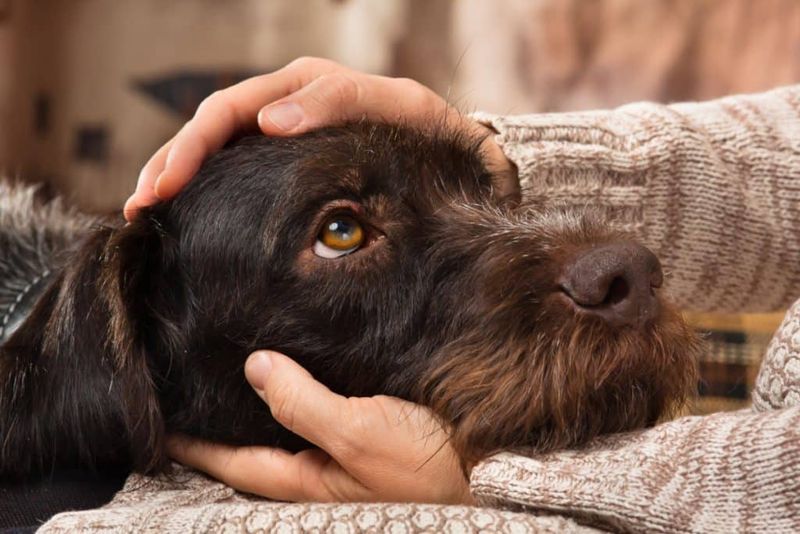
Most dogs melt under the magic of a good scratch behind the ears or a gentle belly rub. Physical touch releases oxytocin – the bonding hormone – in both you and your pet, creating feelings of connection and security.
Learn your dog’s preference for touch by watching their reactions. Some adore chest scratches while others prefer long strokes down their back. The relaxed expression, leaning into your hand, or the famous “leg kick” during a perfect scratch shows you’ve hit the right spot.
Just five minutes of gentle petting daily can lower your dog’s stress hormones and blood pressure. This simple act of love speaks volumes in their language.
5. Predictable Walking Routes

Familiar paths make walks more than exercise – they become confidence-building adventures! Dogs gain security from knowing their territory and the expected sights, sounds, and smells along the way.
Having regular routes allows your dog to anticipate exciting landmarks, like the corner where squirrels gather or the friendly neighbor who offers treats. This predictability creates a sense of mastery over their environment.
While mixing in new paths occasionally keeps things interesting, maintaining several standard routes provides the perfect balance of security and stimulation. Watch how your dog walks taller and more confidently on familiar streets – it’s their way of showing they feel safe and in control.
6. Calm Greetings And Departures
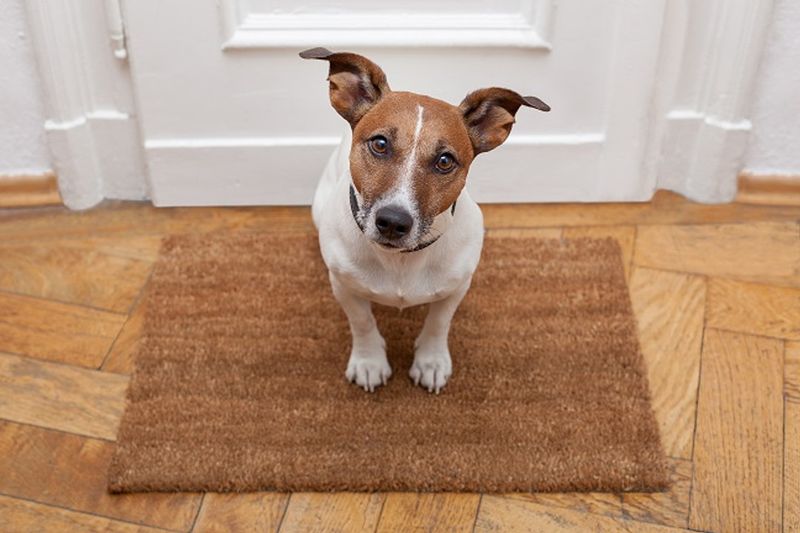
The way you say hello and goodbye significantly impacts your dog’s emotional state. Keeping arrivals and departures low-key helps prevent separation anxiety and overexcitement, two common sources of stress for our canine companions.
When leaving, avoid long, emotional goodbyes that signal something’s wrong. Instead, give a quick pat and a casual “see you later” attitude. Coming home calls for similar restraint – wait until your dog settles down before offering affection.
This measured approach teaches your pup that comings and goings are normal, unremarkable events. Your calm demeanor becomes their emotional anchor, reassuring them that separations are temporary and nothing to fear.
7. Positive Training Sessions
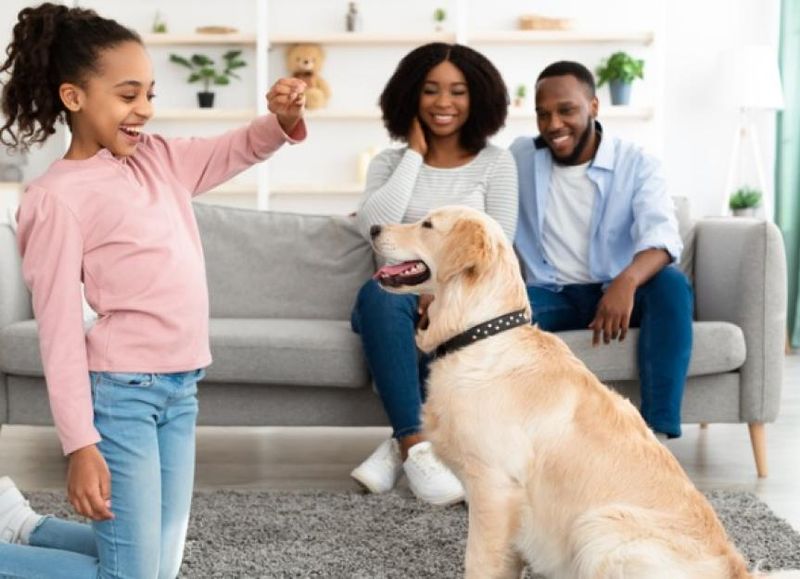
Short, upbeat training moments sprinkled throughout the week give your dog mental stimulation and build confidence. Mastering new skills provides dogs with a sense of accomplishment and strengthens your communication bond.
Keep sessions under 5 minutes to maintain enthusiasm. End while your dog is still engaged and successful, creating positive associations with learning. Reward-based methods using treats, toys, or praise make training feel like a fun game rather than work.
Teaching simple tricks like “high five” or “spin” might seem trivial, but these accomplishments give dogs purpose and pride. The joy in their eyes when they nail a new command speaks volumes about how fulfilling these achievements are for them.
8. Consistent House Rules
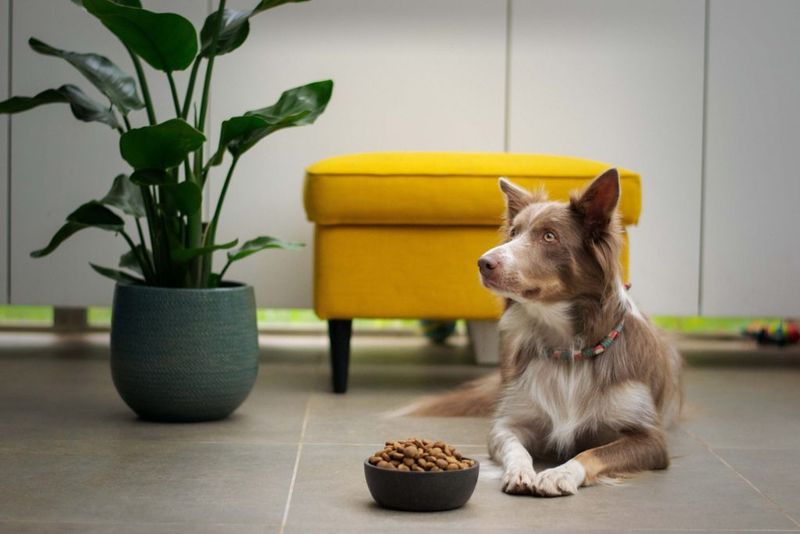
Clear boundaries might seem restrictive, but they actually create security for your dog. Knowing exactly what’s allowed and what’s off-limits eliminates confusion and anxiety about pleasing you.
When everyone in the household enforces the same rules – whether about furniture privileges, begging at the table, or greeting visitors – your dog learns to predict outcomes. This predictability is deeply comforting to canine minds.
Avoid sending mixed signals, like occasionally allowing counter-surfing when you’re in a good mood. Your dog can’t understand these inconsistencies and may become anxious trying to figure out the changing rules. Firm, fair, and consistent boundaries create a framework where dogs can relax, knowing exactly where they stand.
9. Scent-Based Enrichment
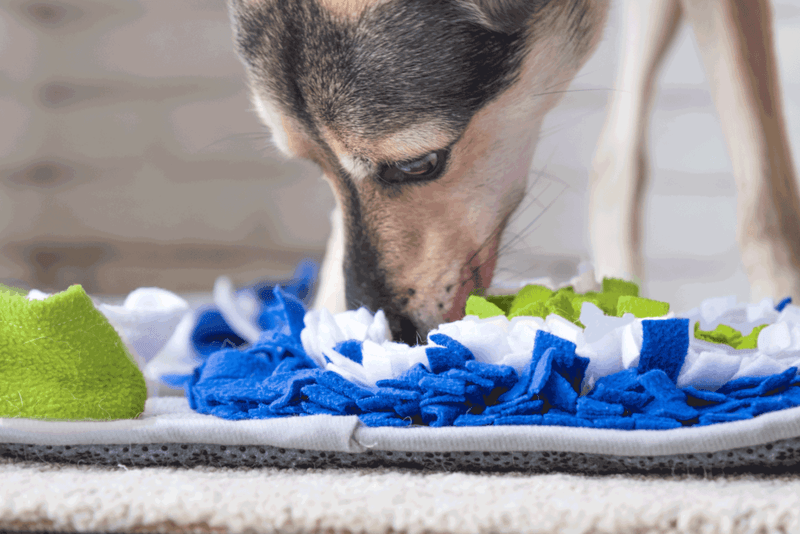
Your dog’s world revolves around smells – their nose contains up to 300 million scent receptors compared to our mere 6 million! Sniffing activities tap into their primal instincts, creating deep satisfaction and mental stimulation.
Scatter feeding (sprinkling kibble in grass for them to find) or using snuffle mats transforms mealtime into an engaging treasure hunt. These activities mimic natural foraging behaviors, giving dogs a sense of purpose and accomplishment.
Even a simple “find it” game with treats hidden around the house exercises their problem-solving skills while honoring their natural abilities. The concentrated look on your dog’s face during scent work shows how fulfilling these activities are – they’re doing what they were born to do!
10. Quiet Decompression Time

Dogs need downtime too! After stimulating activities or social interactions, quiet recovery periods help your dog process experiences and reset their nervous system. Without this balance, dogs can become chronically overstimulated and stressed.
Watch for signals that your pup needs a break – yawning, looking away, or seeking distance from activity. Respecting these cues by providing a calm space builds trust that you understand their needs.
Create a peaceful atmosphere by dimming lights, reducing noise, and minimizing household traffic during these times. Many dogs benefit from a predictable daily quiet hour, just as children need nap time. This scheduled decompression helps regulate their emotional state and prevents behavior problems stemming from overstimulation.
11. Inconsistent Routines

Constantly shifting schedules throws your dog’s internal clock into chaos. Unlike humans, who understand schedule changes, dogs rely entirely on patterns to predict their world and feel secure.
Erratic feeding times, walks, or bedtimes leave your dog anxiously wondering when basic needs will be met. This uncertainty can trigger stress behaviors like pacing, excessive licking, or destructive chewing.
Even weekend schedule disruptions impact sensitive dogs more than you might think. While some flexibility is unavoidable, maintaining core routines – especially for meals and bathroom breaks – provides the predictability dogs crave for emotional stability. Your consistency tells them the world is reliable and their needs will be met.
12. Forced Socialization

Pushing your reluctant dog to interact with unfamiliar people or animals betrays their trust in you as their protector. Not every dog is a social butterfly, and many need gradual, positive exposure rather than being thrown into overwhelming situations.
Signs of discomfort include tucked tails, whale eye (showing whites), stiff posture, or attempting to hide behind you. Ignoring these signals teaches your dog that their feelings don’t matter and you won’t help when they’re scared.
Instead, respect your dog’s social preferences while creating gentle opportunities for positive experiences. Allow them to approach new friends at their own pace, with plenty of escape routes. This patient approach builds genuine confidence rather than forcing interactions that create lasting anxiety.
13. Punishing Normal Dog Behaviors

Barking at the mailman, digging in the yard, or chewing objects are natural canine behaviors, not acts of rebellion. Harsh reactions to these instinctive actions confuse your dog and damage your relationship.
Dogs don’t connect punishment with behavior the same way humans do. Yelling at a dog for digging simply teaches them you’re unpredictable and scary, not that digging is wrong.
A more effective approach redirects natural behaviors to appropriate outlets. Provide digging boxes, proper chew toys, and teach alternative responses to triggers. Understanding that your dog isn’t being “bad” but simply expressing normal needs in inappropriate ways transforms your response from punishment to problem-solving, preserving their sense of security with you.
14. Emotional Flooding

Dogs are emotional sponges who absorb the feelings around them without understanding the context. Your frequent arguments, crying sessions, or anxiety attacks impact your dog’s emotional state, even when not directed at them.
Without explanation for these intense emotions, dogs often blame themselves or develop generalized anxiety. They may show stress through excessive licking, hiding, or clingy behavior during emotionally charged times.
While you can’t eliminate all household emotions, creating a separate space where your dog can retreat during intense moments helps them cope. Simple awareness of how your emotions affect your pet can lead to protective measures, like having a family member take the dog for a walk during stressful situations or providing calming music in another room.
15. Mixed Signals And Unclear Communication

Inconsistent commands or contradictory expectations create a bewildering world for your dog. Using different words for the same command (“come,” “here,” “come here”) or allowing behaviors sometimes but not others leaves dogs in a constant state of confusion.
This communication breakdown often leads to what looks like disobedience but is actually uncertainty. Dogs thrive on clear, consistent signals that help them navigate our human world successfully.
Establish household agreement on command words, hand signals, and allowed behaviors. When everyone communicates consistently, watch how quickly your dog responds with confidence rather than hesitation.
Clear communication builds trust that they can successfully understand and meet your expectations, reducing anxiety about getting it wrong.

